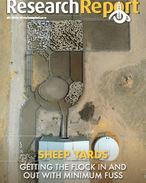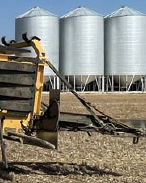This article is 5 years old. Images might not display.
RWA numbers have been minimal so far this season, due largely to low survival rates over the hot and dry 2018-19 summer.
Higher temperatures in spring may lead to an increase in aphid migration, but scientists say crops older than growth stage (GS) 40 do not appear to be attractive to migrating RWA, therefore colonisation of such advanced crops during spring is unlikely.
Rare cases of RWA presence and symptoms, below intervention thresholds, have been reported this year by growers and advisers in areas such as Victoria's southern Mallee and East Gippsland, as well as the New South Wales Riverina, Central West Slopes and Plains, and the Central Tablelands.
Entomologists involved in Grains Research and Development Corporation (GRDC) research investments say economically significant yield impacts are more likely from infestations that occur before stem elongation, but only if these persist during the later (heading and flowering) stages.
Maarten van Helden, an entomologist with the South Australian Research and Development Institute (SARDI), the research division of Primary Industries and Regions SA, says detecting RWA in crops is not difficult as indications of infestation are usually quite obvious.
"A tell-tale sign is white or purple leaf streaking in cereal crops," said Dr van Helden.
"And at late tillering and during stem elongation, leaf rolling may occur."
Growers should search for the presence of aphids by peeling back rolled leaves, since symptomatic tillers do not always contain aphids and therefore treatment may not be required if the aphids have either moved on or died.
First identified in Australia in 2016, RWA is now present in many cropping areas of SA, Victoria, Tasmania and NSW. The aphid has not been detected in Western Australia, the Northern Territory and Queensland.
RWA distribution is expected to move northwards again this year to northern NSW and possibly southern Queensland.
More details and a podcast discussing RWA are available at:
https://grdc.com.au/news-and-media/audio/podcast/just-how-many-russian-wheat-aphids-is-too-many






















